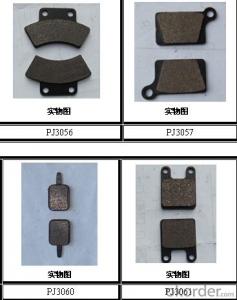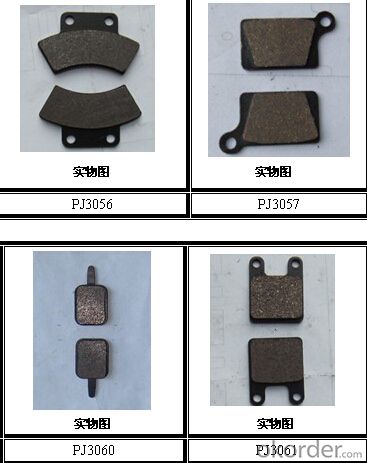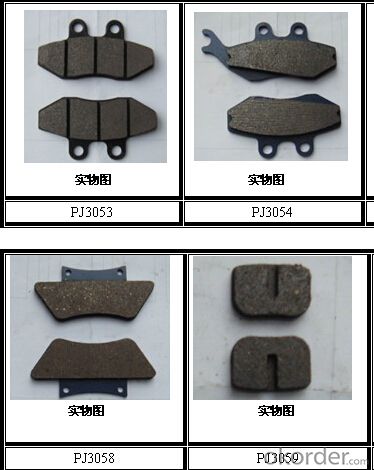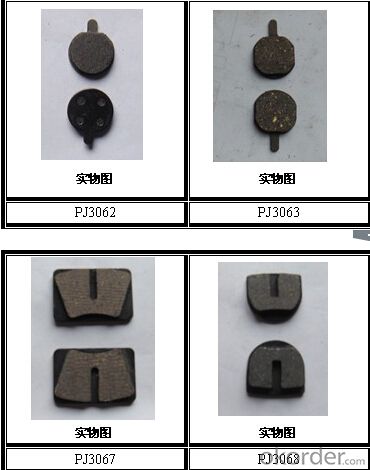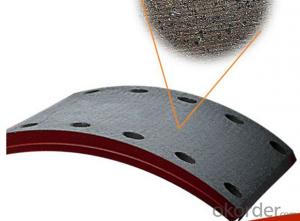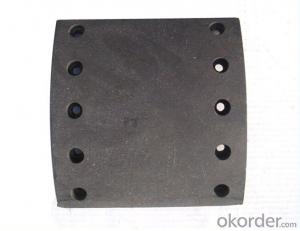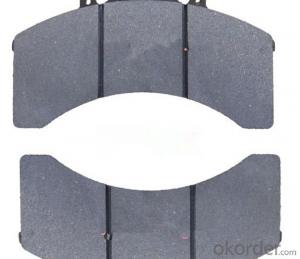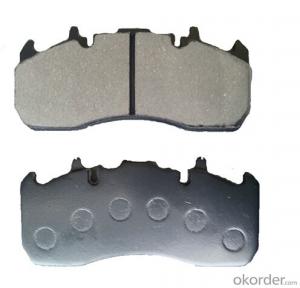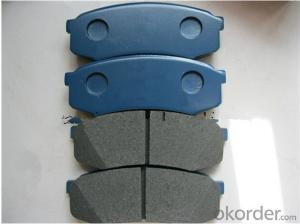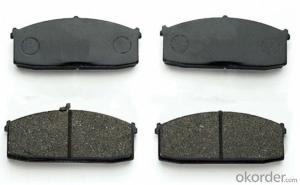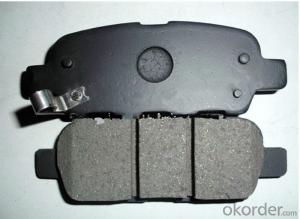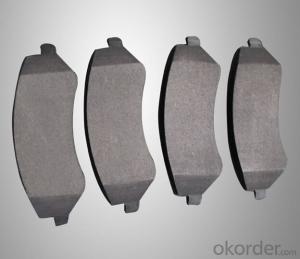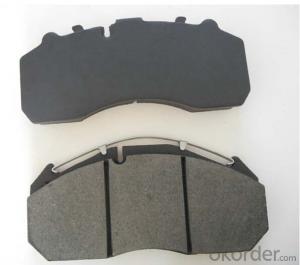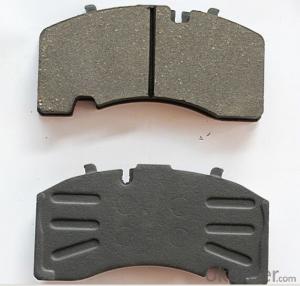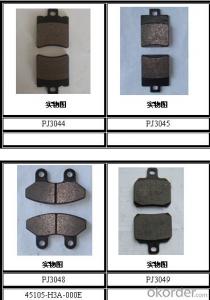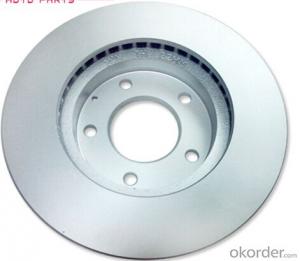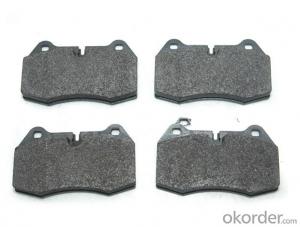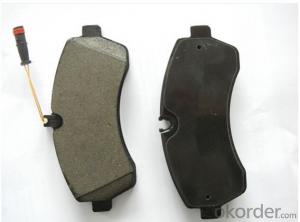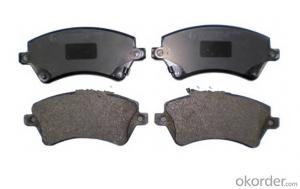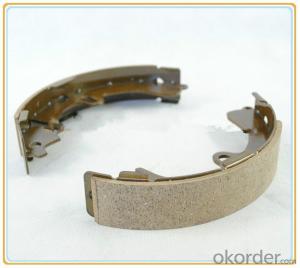Ceramic brake pad D833 brake pad material
- Loading Port:
- Tianjin
- Payment Terms:
- TT OR LC
- Min Order Qty:
- 100 set
- Supply Capability:
- 50000 set/month
OKorder Service Pledge
Quality Product, Order Online Tracking, Timely Delivery
OKorder Financial Service
Credit Rating, Credit Services, Credit Purchasing
You Might Also Like
Features:
1.100% Asbestos-Free Formulation.
2.Deliver High Stopping Power, Reliability And Safety.
3.Optimize The Performance Of Vehicle's Braking System.
4.Offer Extended Life And Minimum Disc wear,Noise-Free ,Least Dusty.
5.High Quality Carbon Steel And/Or Cast Iron Backing Plates For Excellent Bonding
With The Friction Material.
6.Stylish Packaging For Excellent Emphasis Of The Sales Value
Specifications:
| Material | Non-Asbestos |
| Certification | ISO9001 TS16949 |
| car | Bus&Truck |
| MOQ | 50 sets |
| Delivery | 35-45 days |
| port | Ningbo/Shanghai |
| packings | one set in one packing box with our brand or yours |
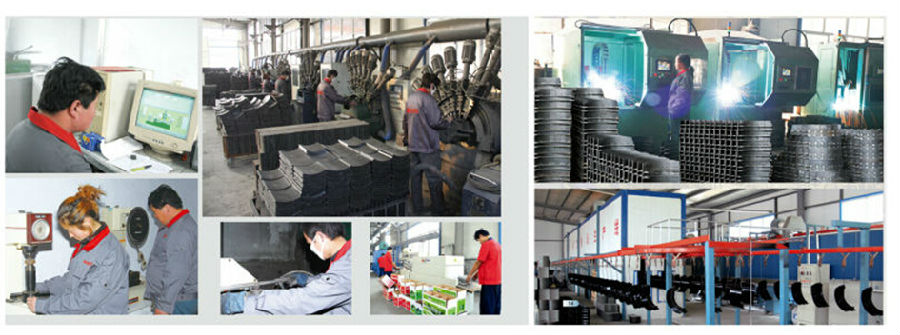

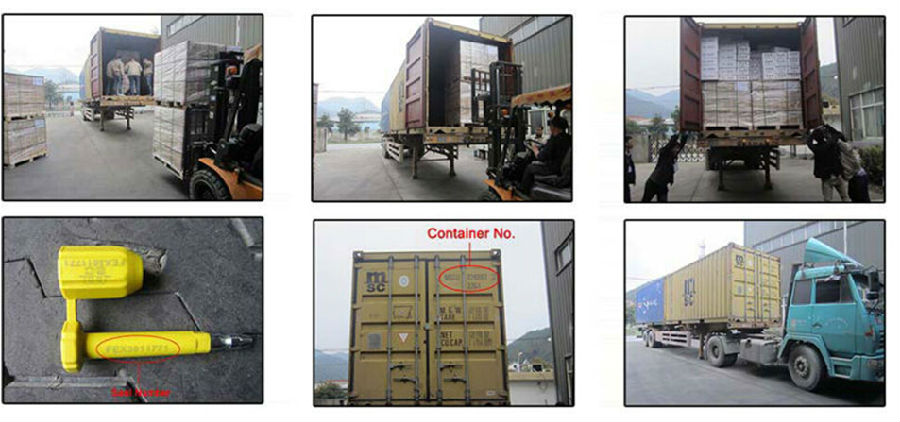
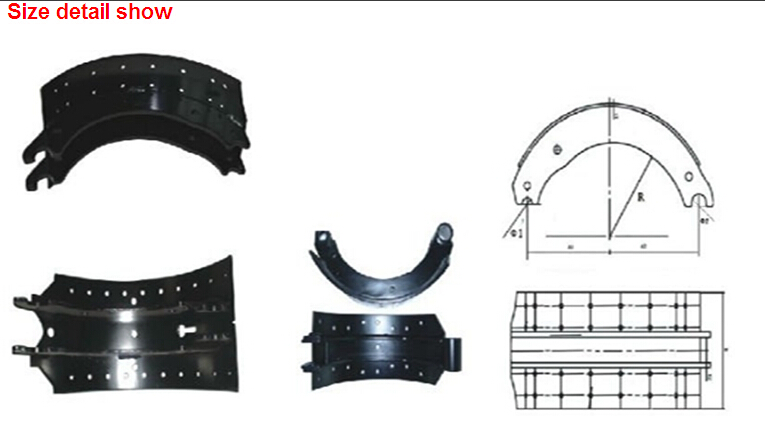
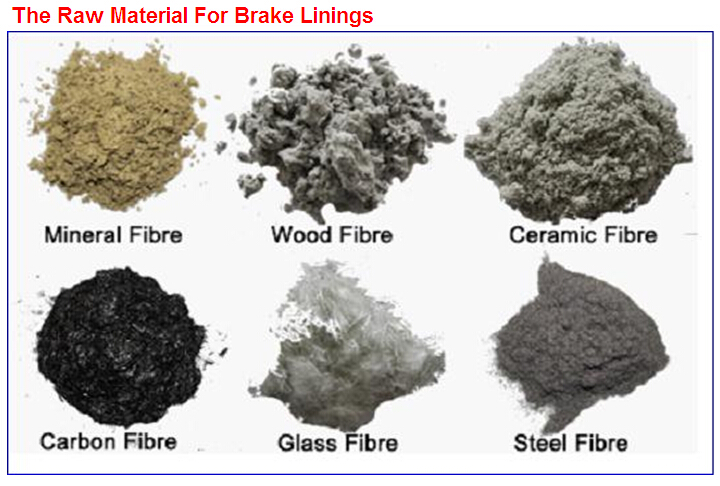
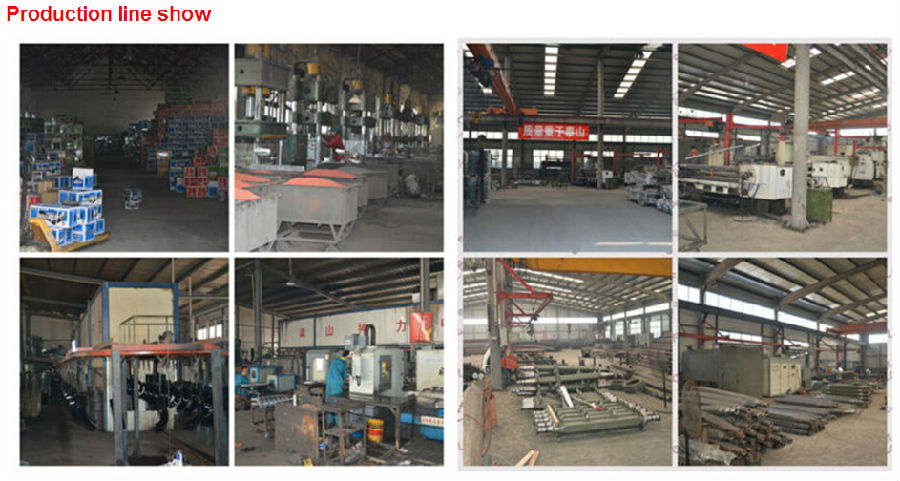
- Q: were can i find a official station i need a certified for the dmv i live in san jose ca
- I am not following your question. Did you build a custom bike, or rebuild a salvaged one? Usually, in most states I have lived in, if either of the 2 above items are true, you must take the motorcycle to the state police garage and one of their mechanics will go over the bike, when he/she has time and judge its road worthyness. Other than that any official motorcycle inspection station can do a basic inspection. If a local garage is not lic. to do bikes, then certainly a dealership is.
- Q: I have a rather small frame weighing 110 , but I really want to learn to ride and get a license. I‘m mainly worried about me being clumsy and not being quick enough on the road. How difficult is it? Is there alot to learn and how long do you think it will take me to become a good rider? Any advice/tips please?
- size isn't a big factorif you want to ride you can find a bike to suit How difficult is it? Is there a lot to learn and how long do you think it will take me to become a good rider this is all relative I didn't find it hard to learn the basics but could already drive a stick shift car now you can do the MSF course they teach you from scratch to being able to get the bike going stop as well as basic control then its just practice the more you ride the better you get As for being a good rider.I know people that have been riding for 30 years still aren't great. so it depends if you pick up bad habits your ability to learn advice do the MSF course. learn to use the front brake did I mention do the MSF course learn to use the front brake.
- Q: What is the brake on the left hand of the motorcycle?
- The left hand brake of the scooter is the rear brake, the right hand is the front brake. With a manual clutch of the left hand is the clutch, the right hand is the front brake, the right foot is the rear brake
- Q: I need to install a mechanical NOT a hydraulic brake switch onto my motorcycle. The bike is a 1978 Suzuki DR 370 enduro. The tail light bulb contains 2 filaments but I only get 2 wires coming out of the back of the tail light. I was told one wire for each filament and it grounds itself. hence why I‘m not seeing 4 wires. Anyway the main problem I am having is I‘m not able to find any mechanical brake switches to rig up to it. I keep finding hydraulic ones which I can‘t use. Been to numerous shops and researched online to no avail. I don‘t mind modifying an aftermarket switch if need be, because finding stock parts seems impossible and expensive anyway. I‘m sure ill figure out how to wire it in when I get a switch that will work but if anyone could tell me how that would be great too.
- right foot brake lever, pull switch mounts to lower right frame with long skinny spring mounting to eye hole on foot brake lever. also check wires behind head light if there is a head light. also visual inspection of bulb is not always clear. is it a 6 volt or 12 volt system, i cant remember. a 6 volt bulb chapped my *** once in a 12 volt systemi felt very stupid about that
- Q: The motorcycle discs are heavy and the brakes are not good
- Change the brake line, brake pads just fine
- Q: In order to brake on a motorcycle, should you have the clutch pulled in? Or is it okay to start braking while slowly closing the throttle and not using the clutch?I dont need to know anything else about stopping power, front/rear brake, emergency stopping, etc. Just want to know if I need to fully disengage the clutch before braking or not.
- First off, roll off the throttle all the way before you even begin braking. There is no reason in regular riding conditions to brake while you are still giving the machine gas. Second, braking with clutch is dependent on your bike, your speed and the gear you are currently in. If you are going too slow, then braking without being on the clutch will kill your bike, but traveling at 50 mph and grabbing some brake without the clutch to make it around a curve or corner is normal. You'll be able to feel it when you need to use your clutch while braking. The bike will start to hestitate and if you don't grab the clutch or let off the brake, then it will die. To be honest, you sound like you don't understand the mechanics and regular operation of a motorcycle, and you should take a MSF course. They will teach you through experience. It's a much better help than stangers on the internet trying to describe an action and set of skills in text. Good luck and ride safe.
- Q: How to adjust the motorcycle's liquid brake tight
- Hydraulic brake to adjust the need to adjust the brake handle and then put the next pump on the dust cover under the screws to release a little oil, and then release the brake handle to draw the air under the pump, so that the stroke of the handle will be large, Tight and vice versa
- Q: I remembered that someone told me that motorcycles have specialized paint that doesn‘t let water ruin it. I just want to get a general consensus about whether or not I should cover my motorcycle all the time. Because I‘m taking it to college and we don‘t have garages or anything. Just the wide open nature.
- I don't think you're going to find a practical way to keep your bike protected from the elements at college unless there is a bicycle shelter you can park it in (one of the advantages of 50cc and 125cc bikes) so you'll just have to keep cleaning and drying it back at home - assuming you don't live on campus. Spray a little WD-40 on the metal parts to help protect the bike but be careful not to get it anywhere near the brakes or tyres. The only way to properly protect a bike is to keep in a dry, warm, well-aired garage, plastic motorcycle covers are good but they can trap moisture underneath and humidity can rise upward from the ground attacking the finish.
- Q: My 2007 Ninja with only 3000 miles on it and there are grooves in the rotors already. Are small grooves normal or should i have them resurfaced already? thanks
- the groves are normal, unless the disk gets to thin or severely warped it should be okay, my son has the older ninja 250 and we didn't have to replace the disk until 66000 klm (41250) miles.
Send your message to us
Ceramic brake pad D833 brake pad material
- Loading Port:
- Tianjin
- Payment Terms:
- TT OR LC
- Min Order Qty:
- 100 set
- Supply Capability:
- 50000 set/month
OKorder Service Pledge
Quality Product, Order Online Tracking, Timely Delivery
OKorder Financial Service
Credit Rating, Credit Services, Credit Purchasing
Similar products
Hot products
Hot Searches
Related keywords
